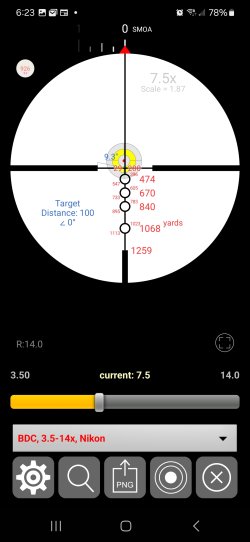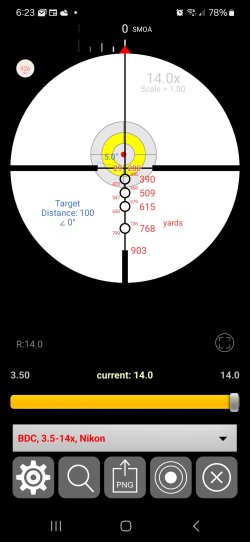Decades ago, in my early days of LRH, the SFP was often leveraged for distance shooting and ranging. I used the SFP Leupold scopes with the Boone and Crockett calibrated reticle, effective to 500/600 yards. Depending on your particular loads trajectory profile, the power ring was marked a two power settings that could be used to calibrate the scope. Leupold supplied a variety of load examples. It took a bit of homework and testing, but once it was set up for a particular load it worked quite well for placing the bullet in the vitals in medium sized game out to 500 yards. My ultimate method for calibration that worked better for me was to use a large target that I zeroed at 200 yards using the 200 yard substention . Using this zero, I would shoot the 500 yard target for which the drop was approximately 5 feet, depending on the load. Sighting the target at 500 yards, I would then turn the power ring until the two groups(200 and 500 yard) were matched to the 200 and 500 retical substentions,…and… that was my "marked" power setting for game to 500 yards. The reticle substentions between 200-500 yards were quite close.
The biggest issue back then was to be able to get an accurate range. I graduated to the Redield SFP 3x9 with the AccuRange reticle that used two calibrated stadia lines, matched to the chest it a deer that when lined up could give a decent range out to 500 yards. It also had calibrated, interchangeable Accu-Range turrets of varying configurations to match to caliber/ballistics. It also worked quite well.
This scope/set-up was used by our snipers along wthe the M-40(Remington 308) rifle in Viet Nam. Reliability however, was claimed to be poor in battle conditions.
Technology has surely advanced since then! Nowadays, while I still own and use SFP scopes, being very particular about the reticle weighting/design, I prefer the.FFP scope and dial for elevation and windage for the long shots if time permits…..which is generally the case.


